COLOR KEY TO NORTH AMERICAIN BIRDS


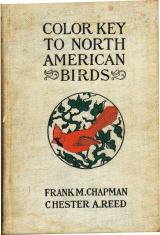
Book title: Color Key to North American Birds
Author: Frank M. Chapman, Chester A. Reed
Editor: Doubleday, Page Company
Publication year:1903
Copywright: 1903
Printer: A. M. Eddy, Albion N. Y.
Book format:: 6 x9 inches (15 ½ X 23 cm.)
Type of cover: Fabric cover
Number of pages: 312 pages
Resale price in 1903: $2.50 (us)
Price for postage: Included in resale price
Dr. Mark V. Barrow Jr., in his book “A Passion for Birds, American Ornithology After Audubon”, suggests that the book “Color Key to North American Birds”, written by Mr. Frank M. Chapman was used as a template by Mr. Roger Tory Peterson for his “Field Guide” book published in 1934. He mentions that Mr. Chapman had positioned drawings and descriptions of many species of birds of similar color on the same page (pages 158 and 158).
Mr. Scott Weidensaul, in his book “A Brief History of American Birding” highlights the important contribution of Mr. Chapman to the development of “Field Guide” with his book “Color Key to North American Birds”, which goal was to allow the identification of birds in the bushes based on a visual comparison approach of the birds’ colors (page 196).
Why would Mr. Frank M. Chapman, author of “Curator of Ornithology in the American Museum of Natural History”, have asked Chester A. Reed to be the artist for the 800 drawings required for the book’s publication?
Was Chester Albert Reed only an artist, or would he have been a catalyst to the project, without us knowing?
Even though Mr. Chapman’s book was published in November 1903, its true story begins on February 1, 1902.
In his monthly magazine “American Ornithology for the Home and School”, Chester published, for his readers, the following color identification chart:
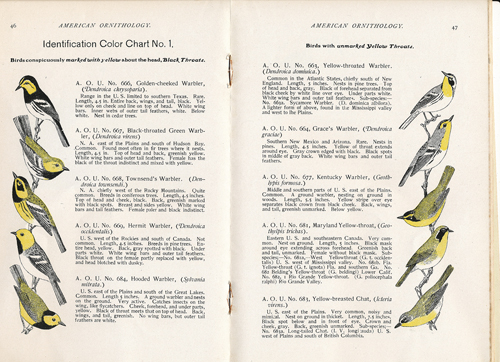
You will notice that we can see many different bird species that have similar characteristics on the same page, as well as a short descriptive text on the bird’s characteristics, its area of dispersion, its area of nesting, its size and its Latin name. (2)
Here is Chester A. Reed’s presentation text of the chart in the editorial of the magazine on February 1st, 1902:
«« In this number we give IDENTIFICATION COLOR CHART – No 1. We hope to give at least ten of these charts during the present year. The object of these is to furnish a ready means of identifying birds. You will notice that the most prominent color on all these birds is yellow; that the five on one side of the sheet have black throats and those on the other side have plain unmarked yellow throats. We shall follow the same plan with the subsequent charts. Birds having similar markings and color will be grouped together and the text will call attention to the distinguishing marks, and give the locality where each is found. It’s use: Suppose that a person in California sees an unknown small bird. He notes that the most striking color is yellow and that it has a black throat. Turning to the chart of yellow birds with black throats, he will find that only Townsend’s or Hermit Warbler are found in California. A glance will determine which he has seen. We sincerely hope that these charts will prove helpful to many, especially those just beginning the study and to teachers in their schools» (2)»
The text clearly expressed the author’s intention to provide the reader with a tool to identify birds based on a visual comparative approach of the colors of the birds.
The First Meeting with Mr. Frank M. Chapman
A few days after the publication of the color identification chart, Mr. Frank M. Chapman went to Chester and Charles’ office to discuss the publication of a book. Charles K. Reed followed up with a letter written on February 12, 1902, and made an offer to Mr. Chapman for the publication of a book entitled “The Color Key.” (3)
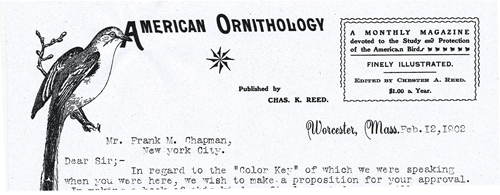
In the letter, Charles explained the different elements involved in the project.
He recommended that the book had between 150 and 200 pages, that it should have a hard cardboard cover and, of course, that the drawings, provided by Chester, would be approved by him. It would cost $1,200.00 to print the first 3,000 books, and the suggested retail price would be $1.50 which, according to Charles, would be a reasonable price for that type of book.
The offer indicated that Chester would help Mr. Chapman to divide the bird species of similar colors into a few groups and, later, to organize the species in groups of five based on their size and colors. Interesting fact, Charles mentioned that Mr. Chapman’s book would not conflict with the book “Birds of Eastern North America” that Chester was preparing.

The information tells us more about Chester’s intentions when publishing his color identification chart on February 1, 1902. He prepared his “Bird Guides” well before presenting his book “Color Key to North American Birds”, which would be published in November 1903 with Mr. Chapman. For more information, please consult the section entitled “For the most curious #1.”
Contract Agreement
After only a few days of discussion, Mr. Frank M. Chapman and Mr. Charles K. Reed signed a contract agreement. (9)

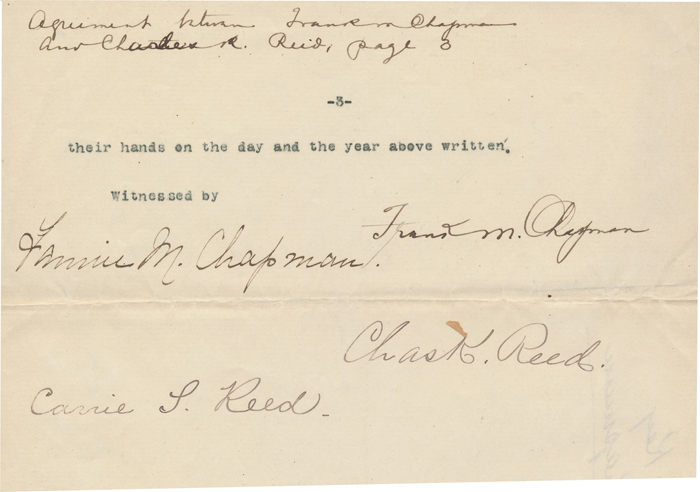
The contract defined Mr. Chapman’s expectations, Chester A. Reed’s responsibilities and the editor’s commitment, as Charles K. Reed obtained the distribution rights of Mr. Chapman’s book. The contract defined the clauses for sharing the production costs and the benefits at 50% between Mr. Frank M. Chapman and Mr. Charles K. Reed.
Chester A. Reed’s Role
A few weeks after signing the contract, in a letter dated March 25th, 1902, Charles K. Reed wrote to Mr. Chapman to inform him of a few administrative details in preparation of the book. At the end of his letter, he mentions very clearly that he will approve all plans taken with his son.
Starting then, Chester assisted Mr. Chapman and acted as a middleman between Mr. Chapman and Charles in the book’s conception. (4)
In this project, Chester would draw over 800 pictures of birds that show the distinctive colours and feathers characteristics for each species, without exaggerating the colours as it was often done at the time. Chester A. Reed held in his hands each bird that he drew for the book. The majority of the birds came from his and his dad’s own specimen collection. However, in many cases, he had to obtain originals from outside of the collection.
Many species have been provided by the “Museum of Natural History” or taken from private collections around the country. Some of those had invaluable specimens. In addition, Chester travelled a few times to draw some specimens that could not be moved, by fear of damaging them during transportation. (5)
An important part of the work consisted of assembling the birds according to the criterion established and to describe them. The order of presentation did not respect the usual arrangement by “Order of the Species.” The classification had been abandoned to regroup the birds by color similarities.
Classifying and regrouping 800 birds by colour similarity is a huge task. They needed a “key” to simplify the work. When Chester presented his first « Color Identification Chart” in February 1902, he had already classified and organized many groups of birds following certain criterion. When Mr. Chapman started his work in March 1902, he had not analyzed all the species that could define and regroup birds by color similarity. In addition, he had to write the descriptions for each species. It was a huge task and he had to take into account all elements in a short period of time.

(6)
The letter above, dated November 6, 1902, shows the complexity and the amount of work required for the project. We can see that Chester did not hesitate to offer his help to Mr. Chapman to select the species using the birds regrouping key by color similarity that he had created himself before starting to work with Mr. Chapman.
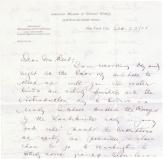 This other letter, handwritten by Mr. F. M. Chapman on December 23, 1902, confirms without doubt, the efforts that he should undertake to follow Chester’s rhythm. It also confirms Chester’s important role in supporting Mr. F. Chapman. Here is an extract of the letter:
This other letter, handwritten by Mr. F. M. Chapman on December 23, 1902, confirms without doubt, the efforts that he should undertake to follow Chester’s rhythm. It also confirms Chester’s important role in supporting Mr. F. Chapman. Here is an extract of the letter:
« Dear Mr. Reed: »
« I am working day and night at the Color Key and have to keep up with you. The water-birds are entirely finished and the introduction Key to Orders is ready. I shall complete the Ranges of the Land-birds early in January and will rush the inscriptions as rapidly as possible. I shall have to go to Washington to study some groups – Shore–birds, Ammodrami, Peucaeas, etc, and plan to be there in January. (16)»
During the whole project, Chester acted as a coordinator between Mr. Chapman and the printer. His experience in ornithology allowed him to help Mr. Chapman with some technical elements to improve the content and presentation that a printer could not have suggested.
Mr. Chapman could rely on a talented artist to produce bird drawings, but most importantly, Chester, an experienced ornithologist, had in-depth knowledge of bird identification based on color characteristics. Chester knew Mr. Chapman’s needs, as he had studied them before the publication of his “Color Identification Chart” in February 1902.
For that reason, Mr. Chapman chose Chester for the realization of his book “The Color Key to the North American Birds”.
A Longer Project than Planned
Charles K. Reed had evaluated the project to take about 6 or 7 months of work. (3) The project actually took almost 2 years before the book was made available in stores, on November 15th, 1903.
To commercialize the book, Charles K. Reed agreed with Mr. Chapman to transfer the copyright and publication rights to a new partner: Doubleday, Page & Company.
The transfer took place on April 17, 1903. The contract that transferred the copyright from Chester A. Reed to “Doubleday, Page & Company” confirmed the agreement. (11)

(11)

(12)
In that contract, one can see the usual clauses in copyright transfer. It also specifies that the author would receive 45% commission on the suggested retail price of $2.50.
It is interesting that, here, Chester is considered as a co-author of the book with Mr. Chapman.
The publication of “Color Key to North American Birds” was a great success, even in its first weeks of commercialization. The first edition was of 5,000 books. More than half of the copies were even sold before the publication. A new edition of 5,000 books was printed the week of December 21, 1903. (5)
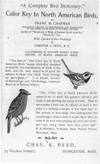 Here is the first ad for the book in “American Ornithology for the Home and School” in December 1903. (13)
Here is the first ad for the book in “American Ornithology for the Home and School” in December 1903. (13)
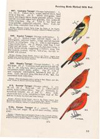 Here is an example used in the advertisement of the book.(14)
Here is an example used in the advertisement of the book.(14)
In January 1904, Chester published, for the last time, his 24th colour identification chart for the subscribers to his magazine “American Ornithology for the Home and School.” (8)
It coincides with the publication of an article presenting Mr. Chapman’s book content in the “New York Times” on January 30th, 1904, where Chester was not considered as a co-author of the book.
Please click on the following link to consult the article of “New York Times” in January 1904 »
A 10-Year Contract Agreement
In 1902, Charles K. Reed signed a contract with Mr. Chapman that gave him the publication rights to the book “Color Key to North American Birds.”
In June 1912, the agreement ended when Mr. Chapman acquired all rights for his book “Color Key to the North American Birds.”
The following letter was sent to Mr. Eddy, Charles’ printer, on June 11, 1912. It confirms the sale of all rights for the book “Color Key to North American Birds” to Mr. Chapman.(15)
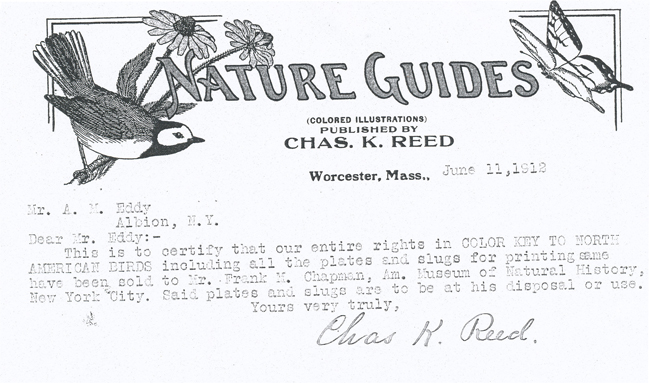
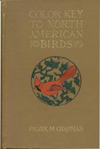 It explains that, starting with the publication of a revised version of the book “Color Key to North American Birds” in November 1912, Chester A. Reed’s name would not appear on the book’s cover and that the new editor would be “D. Appleton & Company.”
It explains that, starting with the publication of a revised version of the book “Color Key to North American Birds” in November 1912, Chester A. Reed’s name would not appear on the book’s cover and that the new editor would be “D. Appleton & Company.”
When Chester A. Reed published his “Color Identification Chart” for the first time in February 1902, he did not expect that his idea would be picked up by Mr. Frank M. Chapman and that the book would become a reference for future identification books.
His collaboration with Mr. Chapman was an important step in his ornithological career. He will frequently refer to that book and to his collaboration with Mr. F. M. Chapman, who was a renowned scientist at the beginning of the 20th century in ornithology.
Even though the publication of “Color Key to North American Birds” inspired Chester, it was not for his “Bird Guides” that he would publish in November 1905, but for a book that he had started to produce and that would be published in April 1904. That book is “The North American Birds Eggs.” (15)
Here is the slide show of the presentation.